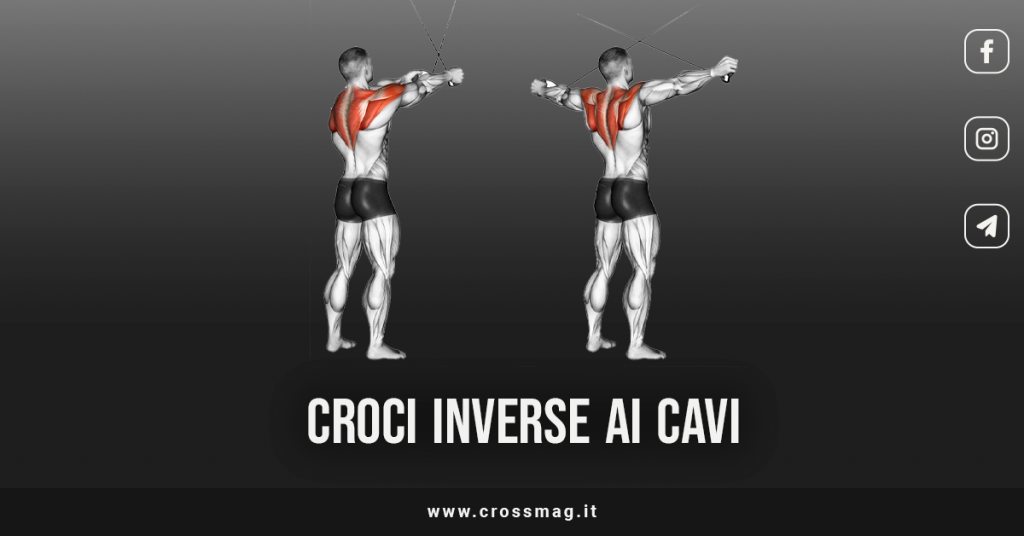To get one well developed and complete muscles of the shoulders, you have to make sure to train them in all their parts; people often focus on deltoids side and front, forgetting the rear ones.
Well-developed posterior delts will help maintain the shoulders in balance and will help prevent shoulder injuries and rotator cuff problems.
Very often the anterior delts are more developed because they are stressed in the most common exercises, such as bench press e Overhead press, leaving the rear ones in the background, which, on the other hand, should be trained with light weights and with higher repetitions; this is where an allied exercise for this muscle district comes into play: the inverse crosses to the cables.
Index
Execution of reverse crosses on cables
Starting position: grasp the cable handles by crossing your hands at shoulder height (the left upper cable in the right hand and vice versa).
Now move your arms backwards trying not to bend them too much; stop when you cross the bust line and the shoulder blades are close together; return to the starting position with a controlled movement and start the exercise again.
Exercise tips
- Keep your torso straight without leaning forward or backward
- To hit the posterior deltoid, the arms must move backward almost parallel to the floor
- Keep your arms slightly flexed during the movement
- Avoid bending your elbows, shrugging your shoulders, and changing the plane of motion of your arm.
variants
- Single Reverse Cross: This exercise can be performed with one arm at a time, holding on to the machinery with the non-working hand
- Inverse cable crosses with support: this variation can be performed standing or seated and the chest is supported with the back of a bench.
Muscles involved
This exercise trains and involves several muscles:
- Rhomboid
- Infraspinatus and posterior deltoid
- Trapezius
Errors to avoid
There is a common mistake many people make when performing reverse cable crosses: reducing range of motion and time under exertion; the more the movement is shortened, the more useless the exercise becomes.
You should always start with your arms at shoulder height and then get over your torso when you go back and don't stop until your shoulder blades are very close to each other.
In normal crosses there is a risk of straining the scapular joint, but in reverse crosses the weight exerts the force in the opposite direction, so you can bring your arm over your torso without risking this causing a accident.
When to perform reverse crosses on cables
The inverse crosses to the cables are a complementary exercise to be inserted at the end of the sheet in the weekly training session of the back.
In the list of complementary exercises for the lats, however, the inverse crosses are certainly to be preferred as they train the infraspinatus, posterior deltoids and rhomboid simultaneously.
And you, have you ever tried this exercise to train your rear delts? Let us know in the comments!

